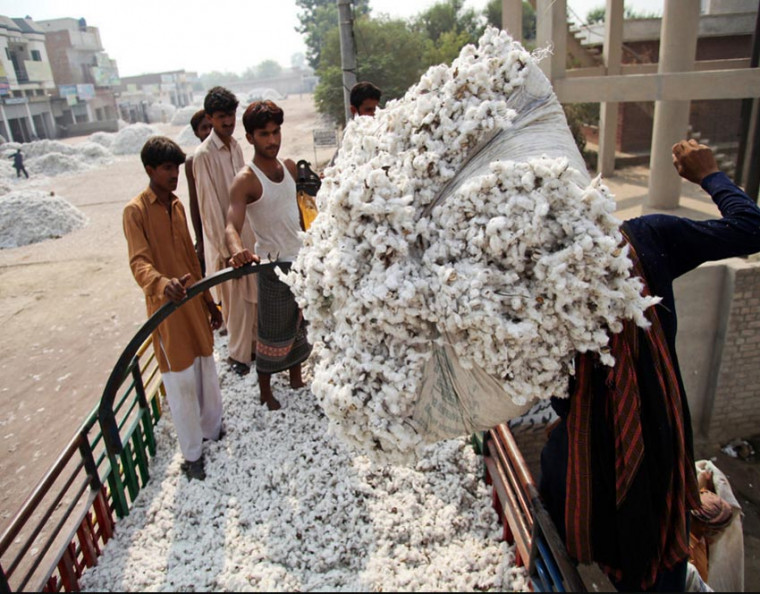| Global cotton market is still oversupplied, but since Sep, the global cotton prices have diverged obviously. For Pakistani spot cotton index, G3 1-1/16, prices have risen from Rs. 8,000 to 9,200 per maund, an increase of 15%, which is mainly attributed to the tight supply caused by sharp reduction of cotton output. In short, the condition may continue and Pakistani cotton prices may remain firm. 1. Pakistani cotton prices firm obviously  Since Sep, global cotton prices have diverged evidently, mainly affected by the own supply and demand change, and the most obvious change is the Pakistani cotton. 2. Pakistani cotton output reduces largely According to Pakistan Cotton Ginners’ Association, by Oct 15, arrivals of new cotton reach 755kt, a fall of 26.5% compared to the corresponding period of last year. Arrivals in Punjab decrease by 34.4% to 348kt, and that in Sindh are down by 18.2% to 406kt. The large fall of arrivals trigger the worries over the cotton supply, and domestic cotton prices shore up. PCGA revises lower the cotton areas from 2.659 million hectares to 2.513 million hectares, and the areas in Punjab decrease much. Therefore, cotton output is expected to lower to 2.162 million tons, a fall of 5.5% from last estimations, and down by 15.2% from the cotton target.
The lower cotton output is also affected by the weather. 3. Weather influence The reduction of cotton output in Pakistan is attributed to the unfavorable weather during the growing period, inferior quality of seeds, and insect attack. In the beginning period of cotton crop planting, hot and dry weather condition prevailed in the most cotton producing regions. Daily temperature was high in most regions, which could reach 40℃ at the highest. In addition, the early sowed cotton crops in Punjab was damaged by the insects, and later, crops in both Punjab and Sindh were attacked by the insects.  Rainfall in Punjab is a little more than normal, and the fields are moisture. Growers are hard to control the insect with the moisture condition, leading to lower yield.  In Sindh, the rainfall is less first and weather is hot, while in July, the rainfall increases a lot, which influences the crops. Besides, growers say that the inferior quality of seeds also lead to the lower yield this year.  4. High tax restricts the cotton imports Due to lower cotton output and inferior quality, large textile mills in Pakistan are signing cotton import agreement to meet the demand. Nevertheless, the government imposes 3% tariff, 2% additional tariff and 5% sales tax on raw cotton this year to protect domestic cotton prices, leading to higher import costs. Meanwhile, FBE delays the payment of business tax refund. Currently, Pakistani cotton textile industry faces large difficulties and market insiders urge to cancel the tax. In the third quarter, cotton imports have declined by 45.8% year on year to 20kt, and in the first nine months of 2019, cotton imports decline by 38.9% to 361kt. Imports of cotton have reached a historical low level. In short, the high import costs will continue to restrict the imports.  In general, 2019/20 cotton output is expected to decrease largely in Pakistan affected by the unfavorable weather during the growing period, inferior quality of seeds, and insect attack. Besides, the high tax will also restrict the cotton imports. In short, the supply of cotton may continue to be tight and cotton prices are supposed to remain firm. | ||||||||||||||||||||||||||||||||||||||||

Pakistani cotton prices push up by the lower output
Το περιεχόμενο του άρθρου δεν είναι διαθέσιμο στη γλώσσα που έχετε επιλέξει και ως εκ τούτου το εμφανίζουμε στην αυθεντική του εκδοχή. Μπορείτε να χρησιμοποιήσετε την υπηρεσία Google Translate για να το μεταφράσετε.

